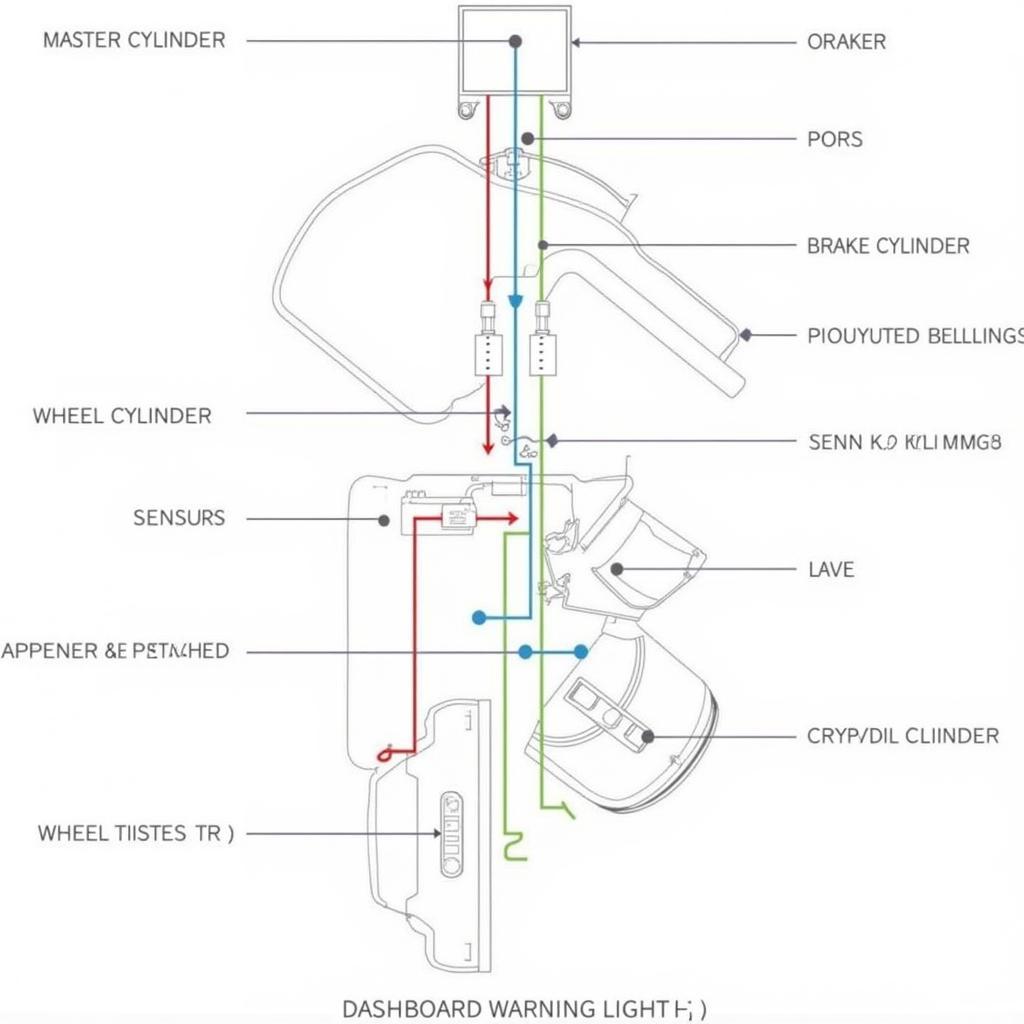The automatic warning brake system is a critical safety feature in modern vehicles, designed to prevent or mitigate collisions. Using sensors, the system monitors the distance to vehicles or obstacles in front of you. When it detects a potential collision, it alerts the driver and can even automatically apply the brakes if the driver fails to react in time.
How Does an Automatic Warning Brake Work?
The system typically relies on a combination of radar, cameras, or lidar (light detection and ranging) to constantly scan the road ahead. These sensors feed information to the vehicle’s central computer, which calculates the distance to objects, their speed, and the likelihood of a collision. If the system determines that a collision is imminent, it initiates a multi-stage response:
-
Visual and Audible Warnings: The first line of defense is usually a visual warning on the dashboard, often accompanied by a distinctive audible alert to grab the driver’s attention.
-
Braking System Priming: Simultaneously, the system may pre-charge the brakes, preparing them for maximum braking efficiency when the driver applies the brake pedal.
-
Automatic Emergency Braking (AEB): If the driver doesn’t react quickly enough, or at all, the system can automatically apply the brakes with full force to avoid or minimize the severity of the collision.
Common Causes of Automatic Warning Brake Problems
While this technology significantly enhances road safety, like any complex system, it can encounter issues. Here’s a breakdown of common problems:
-
Sensor Malfunctions: Obstacles like dirt, snow, or ice can obstruct the sensors, leading to false warnings or system deactivation. In some cases, a sensor may fail altogether, requiring replacement.
-
Software Glitches: The software controlling the system can sometimes experience glitches, causing erratic behavior. Regular software updates from the manufacturer can address these issues.
-
Brake System Issues: Problems with the braking system itself, like worn brake pads or low brake fluid, can also impact the automatic warning brake’s performance.
Troubleshooting Tips for Automatic Warning Brake Issues
-
Check for Obstructions: Regularly inspect the area around the sensors (usually located on the front grille or windshield) and clean them gently with a soft cloth.
-
Consult the Owner’s Manual: Your vehicle’s owner’s manual will provide specific information on the system’s operation and any warning messages related to it.
-
Seek Professional Diagnostics: If the warning lights persist or you suspect a system malfunction, it’s crucial to have the vehicle inspected by a qualified mechanic specializing in automotive electronics.
The Importance of Professional Diagnosis and Repair
Modern vehicles are increasingly reliant on sophisticated software and electronics. Attempting to diagnose or repair issues with safety-critical systems like the automatic warning brake without proper training and equipment can be dangerous.
As an expert in automotive electrical engineering specializing in remote diagnostics, programming, and software installation, I strongly recommend reaching out to qualified professionals. They have the knowledge, tools, and experience to pinpoint the root cause of the problem and implement the correct solution, ensuring your safety and the optimal performance of your vehicle’s safety features.
For instance, a common issue we encounter is the “Collision Warning System Malfunction” message, often accompanied by a malfunction indicator lamp on the dashboard. While this could be due to a temporary sensor error, it could also indicate a more serious problem requiring software updates or component replacement.
FAQs about Automatic Warning Brake Systems
1. How often does the automatic warning brake system need servicing?
While there’s no set service interval for the system itself, it’s generally recommended to have it inspected annually or as part of your vehicle’s regular maintenance schedule.
2. Can I temporarily disable the automatic warning brake system?
Most vehicles allow you to temporarily disable the system, usually through a button or setting in the infotainment system. However, it’s strongly discouraged to do so unless absolutely necessary.
3. Will the automatic warning brake system still work if it’s raining or foggy?
The effectiveness of the system can be affected by adverse weather conditions like heavy rain, fog, or snow. The sensors might not function optimally, and the system may provide warnings later than usual or not at all.
4. Does having an automatic warning brake system mean I don’t need car insurance?
Absolutely not. While this safety feature can help prevent accidents, it’s not a replacement for car insurance. You still need insurance to protect yourself financially in case of an accident.
5. What should I do if the automatic warning brake system activates unexpectedly?
If the system activates unexpectedly, it’s crucial to stay calm and safely bring your vehicle to a complete stop. Once stopped, check your surroundings to understand why the system might have activated. If you’re unsure, it’s best to contact a qualified mechanic for inspection.
Conclusion
The automatic warning brake system is a valuable safety feature that can significantly reduce the risk of accidents. Understanding how it works, potential issues, and when to seek professional help is essential for all drivers. Remember, prioritizing safety and seeking expert assistance when needed ensures the optimal performance of this critical system, keeping you and others safe on the road.


